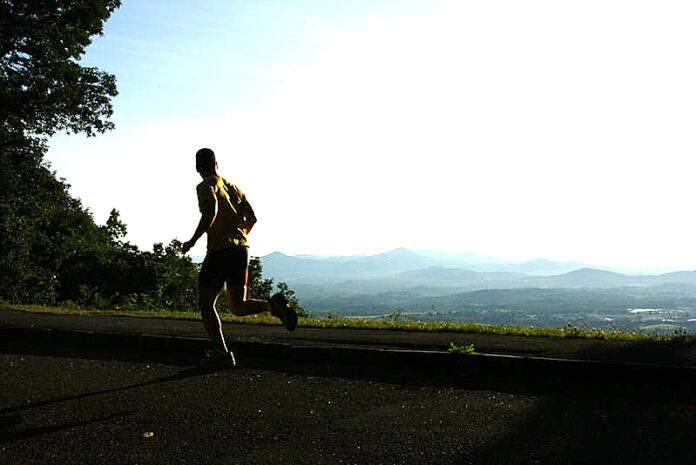
by Gene Marrano
Some runners found last year’s National College Blue Ridge Marathon course in Roanoke so daunting they said right after finishing that they would not return for its second running this year. Others however enjoyed the challenge of a 26.2-mile race that went from the valley floor to the Blue Ridge Parkway and back. So what do organizers plan to do this time around? They’ve added more hills through the South Roanoke area, making the layout even more challenging.
The addition of the Peakwood neighborhood means runners will begin a 1,200-foot climb/descent at mile 17.5 of the 26.2-mile race. “Not only is Peakwood an additional climb, it’s also steep and comes in a difficult part of the race,” explained Molly Bullington, assistant race director. “People’s legs will be tight after coming downhill from the [Mill Mountain] Star.”
“While uphill is difficult, a run that features long, steep downhill sections is more taxing on your body,” said John Carlin, a marathoner himself and co-chair of the Roanoke event, which features three long descents.
Race director Ronny Angell and others have also issued a challenge to the Mount Lemmon Marathon in Tucson, Arizona, which often bills itself as the “toughest road marathon in the world.” In fact, the men’s and women’s winner in Roanoke on April 16 will be offered an all-expense paid trip to Tucson if they want to compete in the Mount Lemmon event this October. “We’ll let the racers decide [which is tougher] themselves,” said Angell.
“We are [also] offering complimentary entries to anyone who completed the 2010 Mount Lemmon Marathon,” said co-chair Pete Eshelman. Last year the inaugural Blue Ridge Marathon attracted around 1000 runners, with about 400 entering the full marathon. Others opted for the 13.1-mile half marathon and some walked the course. To date registrations for the 2011 race are running ahead of last year’s totals.
Angell, who runs a company called Odyssey Adventure Racing, stages mostly off-road mountain bike races in Virginia, West Virginia and other mid-Atlantic states. Adding another section of hills this time around was meant to “make it more challenging. Why not try to be the best? That’s what we always strive to be.”
Angell expects people from all over the U.S. and from other countries to be here on April 16, to compete in “America’s toughest road marathon.” He also encourages walkers to come out, to attempt the half marathon at the very least. “Learn to power walk up [hill],” Angell advises.
Last year’s debut marathon was a “learning experience on a lot of different levels,” said Angell. One of the major goals this year was creating more of an all-day event. To that end local businesses have been recruited to offer special discounts and programs for marathon runners, “to make it more of a festive atmosphere,” said Angell.
“There’s always room for improvement. We [want] to make it more of a destination marathon. The beauty and challenge of the course will do that for many; the added amenities may entice others,” noted Angell. “It makes people want to come in for the whole weekend and hang out. That was our main goal, to bring people to Roanoke … and just to show how friendly we are.” Having racers and spectators spend more money at local shops and eateries won’t hurt either.
Last year’s race generated plenty of chatter on racing blogs and websites, although Angell would like to see more mainstream press outlets cover the race this time around.
He is optimistic that the Blue Ridge Marathon is well on its way to becoming an established event, in just its second year. “It’s a must do,” he contends, “that was our goal from day one, [to make] this an annual event for years and years to come.”
See blueridgemarathon.com for more on the race and to sign up.

